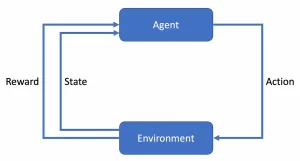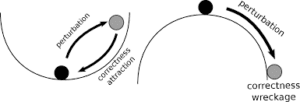The Framework That Looks Like a Compass but Leads You Off Course
Everyone’s been handed the same map: set SMART goals—Specific, Measurable, Achievable, Realistic, and Time-bound—and you’ll stay on track. It sounds solid. Structured. Straightforward.
But here’s the truth: SMART goals create the illusion of progress. They steer your organisation into shallow water, where appearance replaces performance.
Why You Deserve a Better Map
If you lead a team, department, or organisation, you are expected to move forward, upward, and outward. Targets feel like a compass; SMART goals look like direction.
But stop and check your bearings: are you moving toward meaningful outcomes, or are you managing boxes on a dashboard?
You might meet your SMART goals and still drift off course. Customers feel neglected. Staff lose direction. You stay afloat on reports but sink beneath expectations.
I speak from practice, not theory: I am an analytical kind of person, not a wild-and-woolly artist who can’t grasp the importance of the bottom line.
If you’re aiming for improvement—not just activity—this matters to you.
SMART Is a Flat Map in a Three-Dimensional Landscape
Here is the core problem: SMART assumes you know the terrain. That you see what’s ahead and what lies beneath. It gives you form without substance.
SMART goals tell you how to phrase a target, but not what to measure or why it matters. They don’t reveal the internal gears that power your system.
Without system knowledge, you guess. You optimise isolated metrics. You watch teams move sideways, not forward.
That’s why I use a different acronym: DUMB.
- Distorting what’s happening
- Undermining learning
- Minister-inspired or politically safe
- Blocking improvement
The acronym is cheeky, but the pattern is real.
If You Want to Move Upstream, Start With CHECK
To rise above reactive management, dig below the surface.
Start with CHECK:
- Observe current performance
- Investigate system dynamics
- Discover what matters to users
When you check, you understand. When you understand, you predict. You stop managing appearance and start managing meaning.
You may still set goals—but grounded in truth, not hope. You anchor action in insight. You lead.
Final Thought: Don’t Mistake Motion for Progress
Acronyms like SMART feel directional. But if you’re walking in circles, you’re not going anywhere.
So before you chase your next metric, ask: Am I climbing or just pacing in place?
If you want to move upward, CHECK is your first real step.
Curious what “check” might look like in your context? You don’t need a full overhaul to begin—just a conversation that helps you see the system beneath the numbers. Reach out, and let’s explore what your next step might be.
Read more:
The Toolhead Trap: How Pseudo-Lean is Wasting Public Service Resources











